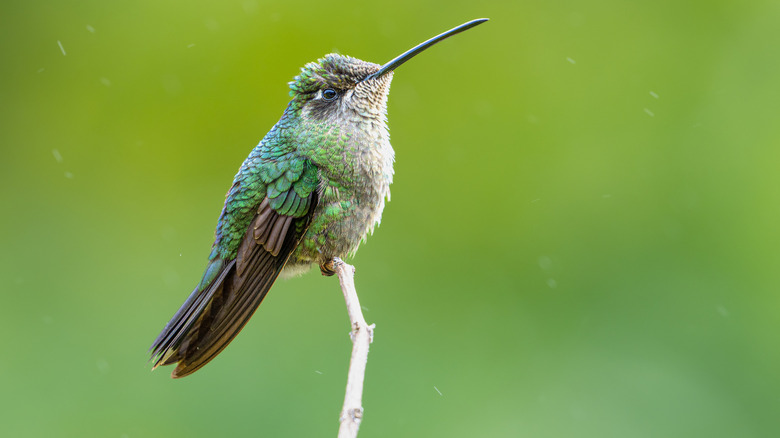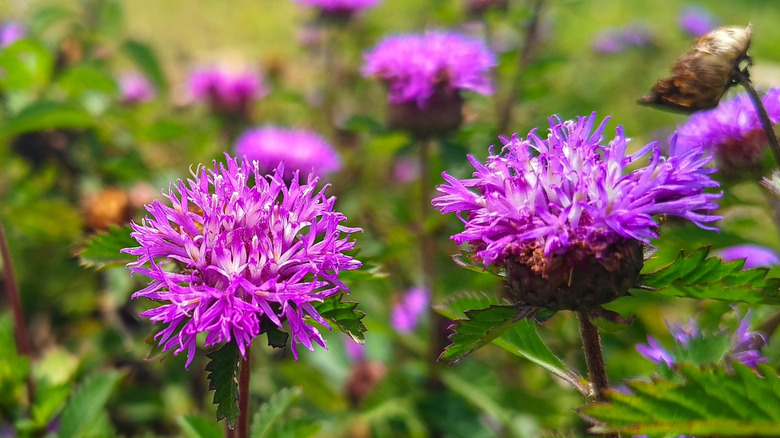Introduce One Stunning Purple Flower In August To Keep Hummingbirds Coming To Your Yard
North America has 15 types of hummingbirds that visit on a regular basis and nearly a dozen others that drop by on occasion. The most common of these enchanting creatures is the ruby-throated hummingbird, which has been found way up in southern Canada. However, while not all hummingbirds migrate, most will head for warmer southern weather come the fall.
Finding food can be a challenge for them. Most of the flowering plants that fed them through spring and summer are no longer in bloom. There are several hummingbird feeders you can DIY with household items on the cheap, but regular cleaning and refilling are vital to avoid the spread of dangerous fungi and bacteria. Feeders can sometimes attract large numbers of birds, and it can get a little overwhelming.
A more natural and more manageable approach is to plant flowers that are still providing nectar late in the season. With its stunning purple blooms, Ironweed (Vernonia noveboracensis) is one of the flowers that will transform your space into a hummingbird heaven. Not surprisingly, it also attracts lots of butterflies. Also known as New England ironweed and New York ironweed, it grows as a wildflower in many places and is hardy in zones 4 to 9. It can be introduced in spring to provide nectar and color through August and into fall. It can also be planted in August for overwintering. Let's look at growing this valuable and attractive plant in more detail.
The planting and care of Ironweed to feed hummingbirds and for fall color
The easiest way to introduce ironweed to your garden is to plant nursery starts in spring, when there's no longer any danger of frost. These can also be planted in early fall, giving them a mild period to establish healthy root systems before winter. If you prefer, seeds can be started indoors, around two months before the frosts finish, then planted out. They can also be sewn directly at that time or in the fall.
Ironweed is a robust plant and easy to look after as long as it gets a sunny position and well-drained soil. It likes to be watered every couple of weeks (more often in very dry conditions) and pruned occasionally to provide airflow and prevent disease. Flowering stems reach three to six feet. Deadhead regularly to promote more blooms. After flowering, cut stems to ground level, or leave the seed heads to feed birds, then do it in spring. Ironwood should be widely available at nurseries, and both live plants and seeds can be bought at Amazon.
There is a smaller version, Western ironweed or Baldwin's Ironweed (Vernonia baldwinii), that grows two to five feet, and giant ironweed (Vernonia gigantea), which grows five to eight feet. All are perennial, though hardiness does vary. When you're planning your hummingbird garden, don't forget to include one or two water fountains to keep them clean and hydrated.

